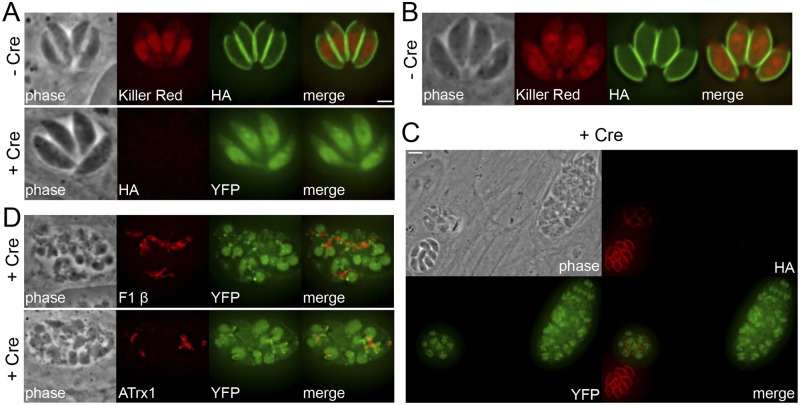FIG 3 .
Gene disruption of selected ISP3 BioID hits using a combinatorial epitope-tagging/Cre-lox strategy. (A) IFA showing parasites with IMC18 endogenously tagged in the DiCre-ku80::KillerRedfloxYFP background (30), grown with or without rapamycin induces Cre recombinase, resulting in excision of the tagged gene. Cre-mediated recombination is monitored by a chromosomal copy of loxP-KillerRed-loxP-YFP under the control of the p5RT70 promoter, which drives YFP expression after the floxed KillerRed gene is excised. Top, untreated parasites. Green, mouse anti-HA antibody. Bottom, ablation of IMC18 had no observable gross effects on parasite morphology as assessed by IFA. Red, mouse anti-HA antibody. Scale bar = 2 µm. (B) IFA showing untreated parasites with ILP1 endogenously tagged in the same background. Green, mouse anti-HA antibody. (C) Disruption of ILP1 leads to disordered vacuoles containing aberrant and misshapen parasites. Red, mouse anti-HA antibody. Scale bar = 5 µm. (D) IFA showing mislocalized mitochondria (top) and apicoplasts (bottom) in ILP1-null parasites. Red, mouse anti-F1 β or mouse anti-ATrx1 antibody.

